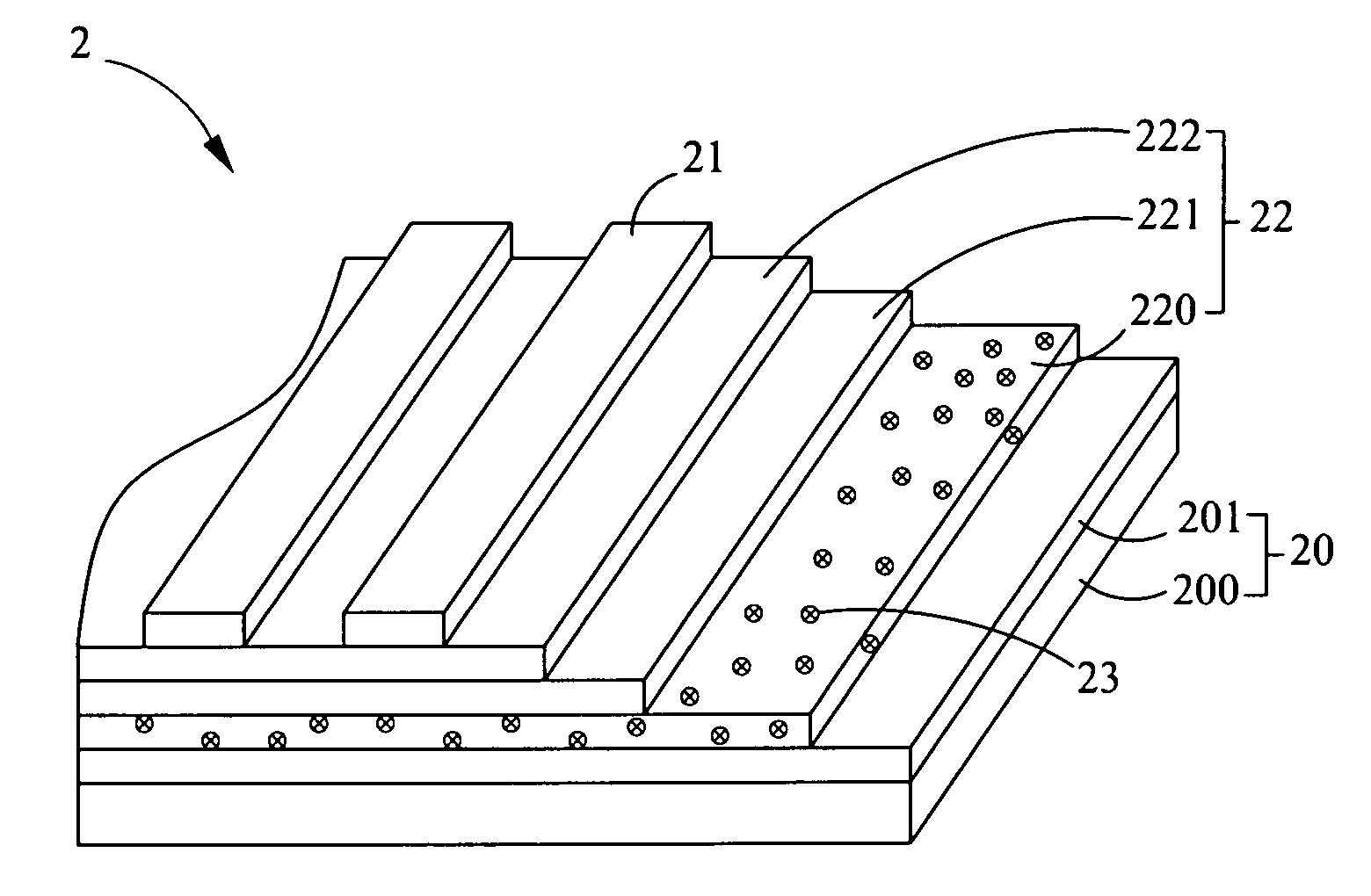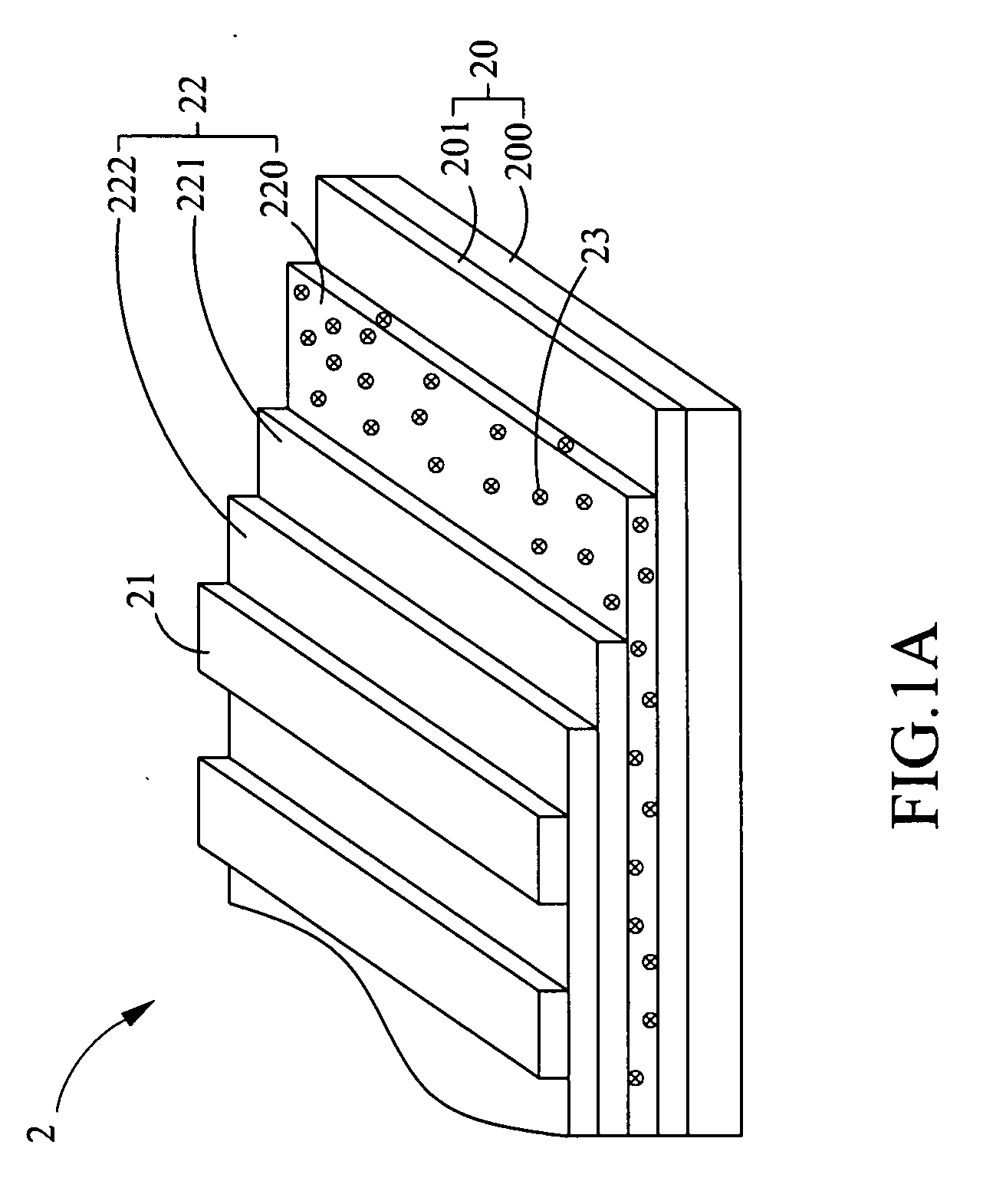Photovoltaic cell having nanodots and method for forming the same
a photovoltaic cell and nano-dot technology, applied in the field of photovoltaic cell technology, can solve the problems of economic growth bottleneck and lower the efficiency of the photovoltaic device, and achieve the effect of improving the efficiency of the photovoltaic cell and increasing the mobility of the hol
- Summary
- Abstract
- Description
- Claims
- Application Information
AI Technical Summary
Benefits of technology
Problems solved by technology
Method used
Image
Examples
Embodiment Construction
[0018]The present invention can be exemplified but not limited by various embodiments as described hereinafter.
[0019]Please refer to FIG. 1A, which schematically depicts a photovoltaic cell according to the present invention. In the present embodiment, the photovoltaic cell 2 comprises a first electrode 20, a second electrode 21 and a photovoltaic conversion layer 22 disposed between the first and second electrodes 20 and 21 so as to convert incident light into a plurality of hole-electron pairs. In the present embodiment, the first electrode 20 is a transparent electrode comprising a substrate 200 and a conductive layer 201 formed on the substrate 200. The substrate 200 may be a transparent substrate, such as a glass substrate or a plastic substrate. The conductive layer 201 may comprise a transparent conductive material such as indium-tin oxide (ITO), aluminum-zinc oxide (AZO) or zinc oxide (ZnO), but is not limited thereto. In the present embodiment, the conductive layer 200 comp...
PUM
| Property | Measurement | Unit |
|---|---|---|
| Electrical conductor | aaaaa | aaaaa |
| Transparency | aaaaa | aaaaa |
| Transport properties | aaaaa | aaaaa |
Abstract
Description
Claims
Application Information
 Login to View More
Login to View More - R&D
- Intellectual Property
- Life Sciences
- Materials
- Tech Scout
- Unparalleled Data Quality
- Higher Quality Content
- 60% Fewer Hallucinations
Browse by: Latest US Patents, China's latest patents, Technical Efficacy Thesaurus, Application Domain, Technology Topic, Popular Technical Reports.
© 2025 PatSnap. All rights reserved.Legal|Privacy policy|Modern Slavery Act Transparency Statement|Sitemap|About US| Contact US: help@patsnap.com



